Search Results
Fine Jewelry University Articles matching: “History of platinum”
Showing only FJU Article results. Click here to show all results.
Fine Jewelry University (Show All FJU Articles)
-
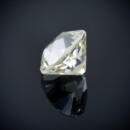
The History of Diamond Cuts
…they show it in a dome effect. The Modern Round Brilliant Cut Now, we are nearing the end of our journey through the history of diamond cuts. The modern round brilliant cut is a product of math and science. Marcel Tolkowsky analyzed diamond … chosen diamond cut for engagement rings and other jewelry. We hope you have enjoyed this exploration of diamond history. What’s your favorite old diamond cut? Let us know in the comments below, and stop by the shop to see real life examples…
-
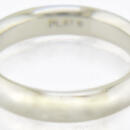
Platinum
… endows it with a brilliant white luster. This helps to reflect the true radiance of diamonds. In the United States platinum is usually marked: PT or PLAT. In Europe, platinum is identified by the following marks: 950 or PT950. The History of Platinum in Jewelry Platinum has been used in jewelry only since the 19th century. So platinum engagement rings are fairly recent. The Italian-French physician Julius Caesar Scaliger discovered Platinum in 1557. In 1590 Spanish Conquistadors …
-
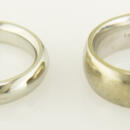
The Difference Between White Gold and Platinum
The first difference between white gold and platinum is the most basic and is the foundation of all the other differences. White gold and platinum are different metals. …alloy. The white color is achieved by a careful choice of the alloying metals, which bleach the yellow of pure gold. Platinum is a naturally white metal. It does not need to be alloyed for color. Jewelry platinum is typically an alloy … usually marked with .900 or .950 to mark its fineness. Some manufacturers state what alloy they are using like 90% Platinum 10% Iridium. How white gold and platinum start out is one of the key differences. White gold even in the best mixture…
-
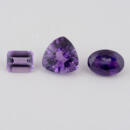
Gem in the Spotlight: Amethyst
… has long been considered a royal color, so it is not surprising that amethyst has been in so much demand throughout history. Gemology Amethyst is a variety of quartz that is colored by the presence iron and aluminum. The violet color of … refractive. It has a vitreous polish luster and its specific gravity is 2.66. Its chemical composition is SiO2. History and Lore The rich history of amethyst dates all the way back to ancient Greek mythology. The word “amethystos,” is …
-
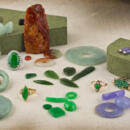
Gem in the Spotlight: Jade
… as early as 6,000 BC, and it has been an incredibly important part of Asian, Central American, and North American history ever since. But, what is jade, and what has given it such a prominent place in human history? The term “jade” actually… gems. This is because even small differences in color or imperfections can drastically change the value of the gem. History and Lore of Jade Jade’s incredible toughness has made it a useful tool throughout history. During the Stone Age of …
-
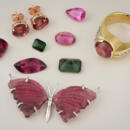
Gem in the Spotlight: Tourmaline
… used in early sonar systems in the First World War as well as in extremely sensitive pressure gauges in submarines. History and Lore of Tourmaline The name tourmaline comes from the Singhalese word turamali, which means “mixed gems” owing …idea of buying a gem mined locally, right here in California . Maybe you just appreciate the vibrant colors and rich history of this very special gem. Whatever your reason, you can’t go wrong with a beautiful piece of tourmaline jewelry, and…
-
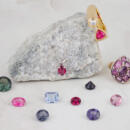
Gem in the Spotlight: Spinel
… systems. It even has the potential to make its way onto our smartphones as a super durable, glass-like covering. History and Lore of Spinel Spinel is arguably the most overlooked and underappreciated gemstone of all time. Spinel has been … spinel jewelry can’t last for generations even becoming a treasured family heirloom. Why Spinel? Despite its long history spinel is relatively new to jewelry in the sense that it is only recently getting attention on its own and not just …
-

Gem in the Spotlight: Topaz
…, “You all are nuts, it’s like a rainbow with all the colors at once.” And of course, all of them are right. History and Lore Topaz in its pure form is naturally colorless, clear like a diamond. The famous “Braganza Diamond” was thought to … comes to mind when I hear people discussing Topaz. You can hear one person say, “I love Topaz; it reminds me of a blue sky.” Then her friend says back, “Topaz may be like a golden sunset, but not the sky.” A third friend will chime in…
-

How Are Lab Grown Diamonds Made?
…, lab grown diamonds that are large enough to be used in jewelry. But, how is it done? Early Efforts Throughout history, many people have claimed to have successfully synthesized diamonds. However, it was not until relatively recently that a…The dream of making a beautiful and valuable diamond from simple carbon has long captivated the imagination of scientists and … successes, but none could ever be scientifically verified. The quest continued. Diamonds are a crystalline form of carbon, and so making artificial carbon crystal was the problem of lab grown diamonds. For decades, manufacturers of …